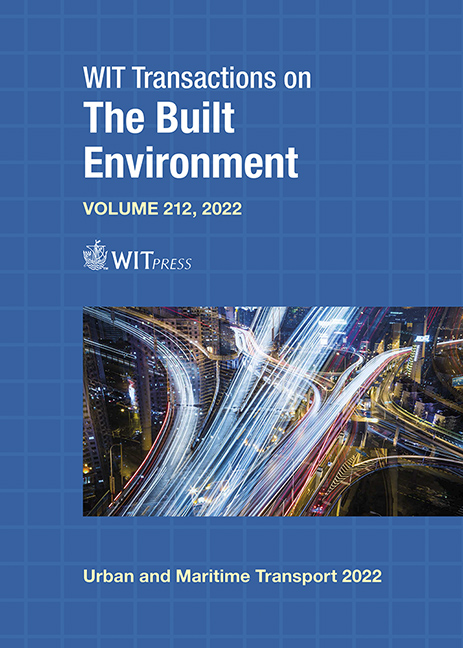BEST PRACTICES EXCHANGE IN SEA–RAIL INTERMODALITY: A CASE STUDY OF THE PORTS OF İZMIR, TURKEY AND TRIESTE, ITALY
Price
Free (open access)
Transaction
Volume
212
Pages
14
Page Range
99 - 112
Published
2022
Paper DOI
10.2495/UMT220091
Copyright
Author(s)
ZEYNEP PEHLEVAN, STEFANO RICCI
Abstract
Benchmarking and best practices derivation is a traditional and consolidated approach in transport planning. Less frequent is the use in the design of ports’ masterplans and intermodality promotion in coastal cities, where the connection between the development of ports and local economy and the quality of the environment is stronger. Rail transport is essential for the development and efficiency of a port as it enhances economic importance and competitiveness. It also provides faster movement and higher port capacity, thus affecting the total throughput, which is a fundamental productivity measure of a seaport. This paper aims to depict a roadmap for the increase of rail modal share in ports’ areas by identifying the most promising operational and infrastructural actions derived by recognized best practices. The case study described in the paper is about the exchange of best practices between the ports of Trieste and İzmir. For many years, İzmir has been an important container port in Turkey. However, its total throughput has decreased dramatically in recent years while its competitors, both in the Aegean and Marmara regions, have been developing their business rapidly. Considering that the owner and operator of the port are Turkish State Railways, the port of İzmir currently has quite a low rail share, which was less than 10% in 2021. This decrease is mainly due to an unsuitable infrastructure and poor coordination with the railway network. This paper exemplifies how it would be possible to increase the rail modal share of the port of İzmir by defining the necessary actions and redesigning the rail infrastructure. This can make the port of İzmir an effective alternative to solve the massive congestion problem of the Marmara region (Istanbul) ports, affected by morphologic barriers. Here, the port of Trieste will be the reference port as it has the highest rail share (50%) in Italy. Its current state and future targets will represent the best practice to increase the rail share in İzmir. Since almost half of the Turkish maritime freight directed to Europe is via Trieste, similar percentages on the Turkish side can strengthen the sea–rail intermodal connection between these port cities.
Keywords
sea–rail intermodality, port connectivity, railway terminal, port of Trieste, port of İzmir




